John Lloyd grew up in a canoe. His first memory, he says, is of standing on tiptoes to peer over the side of the family’s 1937 Skowhegan to watch a toy boat trailing behind on a string. Over time, John grew from passenger to paddler and the canoe became his. For the next 65 years he used it regularly on waterways around New York and the Algonquin Provincial Park in Ontario. But when John and his wife could no longer easily carry the Skowhegan, they passed it on to a couple with young children. John began the search for a boat he and his wife could “pick up and portage and afford.”
John built his first boat, Percy Blandford’s PBK 26, a skin-on-frame kayak, when he was 16. He built two more for friends. Much later, in 1999, on leaving a career in construction, he retrained as a teacher and began working in an alternative high school for students with severe learning disabilities. He brought his love of canoes and boatbuilding into the classroom where, along with an English teacher, John taught a year-long course in which students alternated between maritime literature and project-based learning—and two more PBK 26s were built.
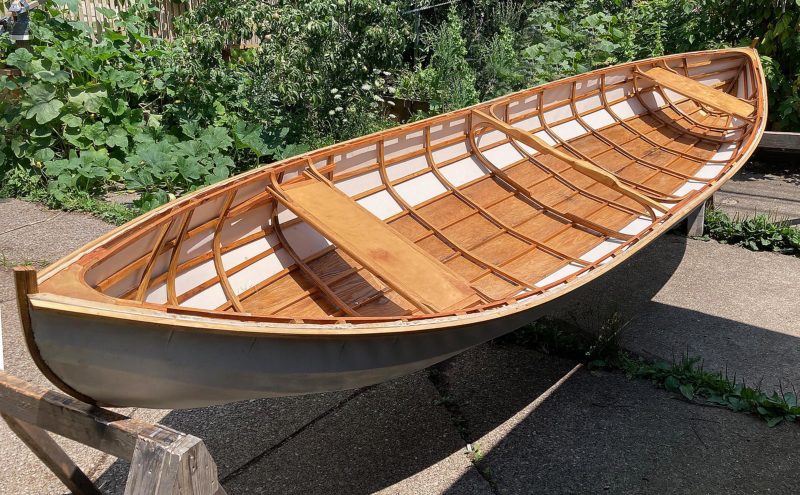 Photographs by John Lloyd
Photographs by John LloydBuilt to his own design, but reminiscent of a wide-bottomed Adirondack Guideboat, John did not regard BELUGA as a total success. Nevertheless she continues to be used by friends in upstate New York.
In more recent years, John built a Platt Monfort Snowshoe 16 canoe called FLIPPER—“due to its habit of dumping the unwary”—and BELUGA, “an original but totally impractical skin-on-frame design resembling a wide-bodied guideboat.” Both FLIPPER and BELUGA were given to friends on the upper Saranac in the Adirondacks.
John gives away completed boats, he says, “in part, because I love to share the sense of freedom that I experience paddling. And, in part, because giving a boat away leaves room for the next one…and there’s always a next one.”
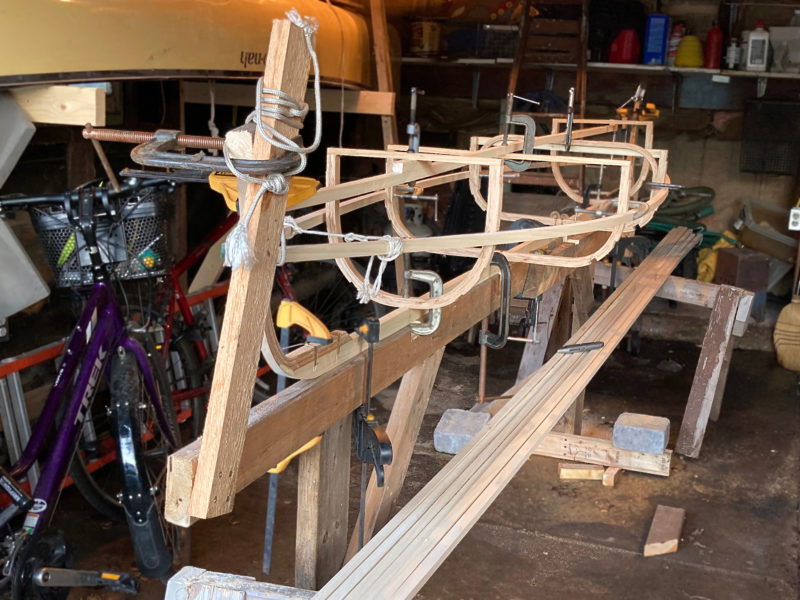
The Wee Lassie was assembled upright. John gave the laminated frames temporary crossbraces to ensure their shape was maintained during construction.
When it came time to replace the Skowhegan, John first decided to try some new techniques on a smaller boat. After some research, he settled on Dave Gentry’s skin-on-frame adaptation of the 10′6″ Wee Lassie, originally designed and built by J. Henry Rushton in the late 1800s.
Gentry describes a setup of polyester skin on a skeleton of solid-wood stringers on four plywood frames. John opted to laminate his frames out of 1⁄8″ red oak to create a lighter, stronger framework. Each of the four frames was laminated over a mold. For the tight bends in the first and last frames he soaked the oak strips, bent them into place on their molds, allowed them to dry, and then glued them up. The cured laminates were trued on a jointer and cut to width on a tablesaw. Each frame was fitted with a temporary crossbrace and set up on its station. The first and last frames were beveled to create a fair hull shape.
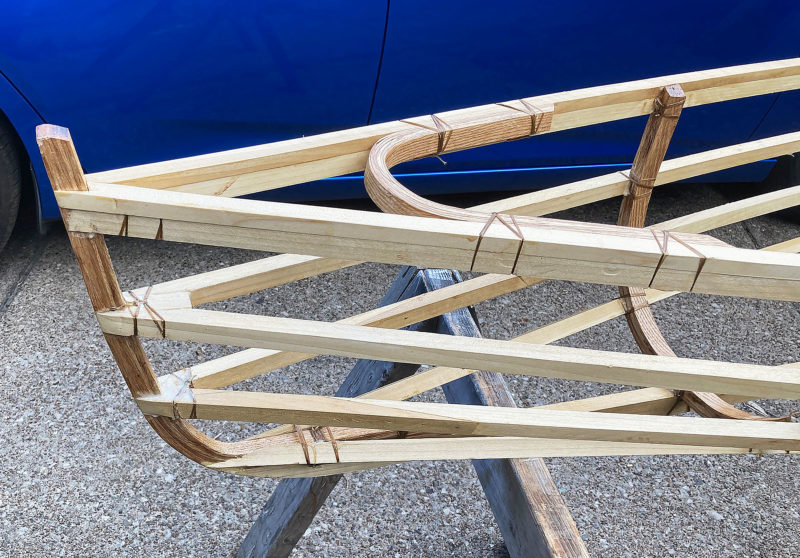
The stringers and frames were joined with glue, pin nails, and synthetic lashings. In past projects John has found that epoxy alone can shear under stress—by using the three different fastening media he hopes he’s achieved longevity and strength in the joints.
For the stringers, John used larch. He volunteers as a ship’s carpenter at the Buffalo (New York) Maritime Center and was able to use scrap from material milled for larger projects. He cut out the “brashy grain and knots,” and scarfed pieces together to achieve the required lengths. He attached the stringers to the frames using yellow glue, pin nails, and nylon artificial-sinew lashings “sort of belt, suspenders, belt,” reflects John. “But my experience has been that epoxy alone will shear when the joints are stressed.” He notched the outside face of the stringers so that the lashings would not create bulges beneath the fabric skin.
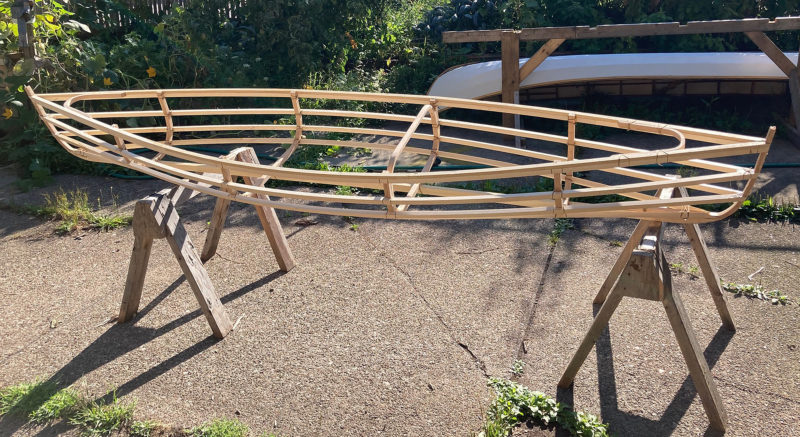
The assembled framework awaiting its skin. Internally, the central plank is still to be fitted.
With the frames and stringers complete, John fit a single cedar plank on which to stand while boarding and sit while paddling. He laminated breasthooks that provide both structural strength and carrying handholds. The backrest was laminated as an integral part of the third frame.
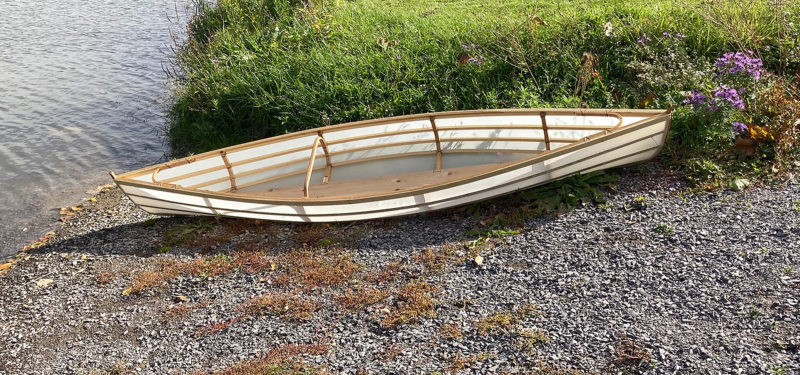
With the light shining through the Dacron skin, the simple symmetry of the Wee Lassie’s framework is revealed. For additional strength John fitted laminated breasthooks, which also serve as carrying holds, as does the laminated backrest at the third frame.
Once the woodwork was finished and varnished, John turned his attention to the skin. He applied heat-and-bond tape to the gunwales and keel. “Platt Monfort used the technique and honors to him for thinking it up, it works really well. I ironed the tape to the skeleton and then sealed the Dacron skin fabric to the tape using a household iron. I also used the iron to shrink the fabric.” At the bow and stern, he slit the fabric, attached and trimmed one side, and then repeated the process for the second side. Finally, he applied laminated-oak trim pieces at the stem and stern, and fitted rubrails and a keel made of larch.
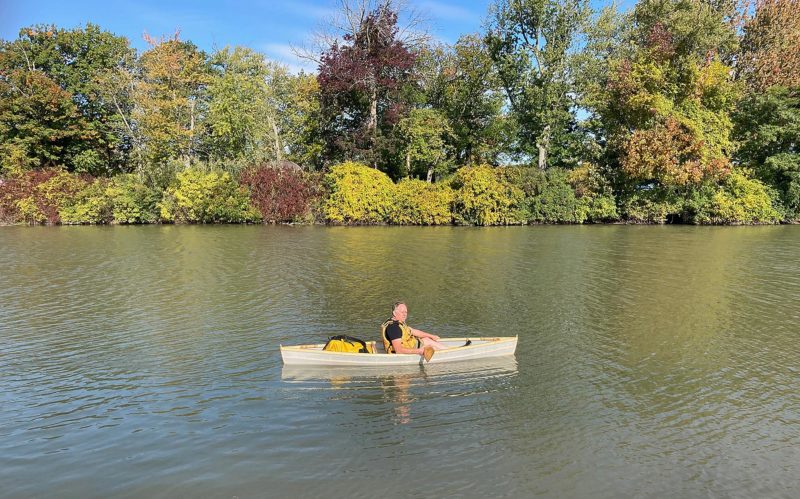 Cynthia McCloskey
Cynthia McCloskeyDespite its diminutive size the Wee Lassie performed well with John, and maintained good stability even after he brought a 30-lb bag of gear on board.
The finished canoe weighed 24 lbs—perfect for cartopping and singlehanded paddling. “It’s stable and responsive with an old man on board,” says John, “and was unaffected when I loaded an additional 30-lb backpack.” The Wee Lassie was passed on to his daughter and, with experience gained, John looked for a larger design.
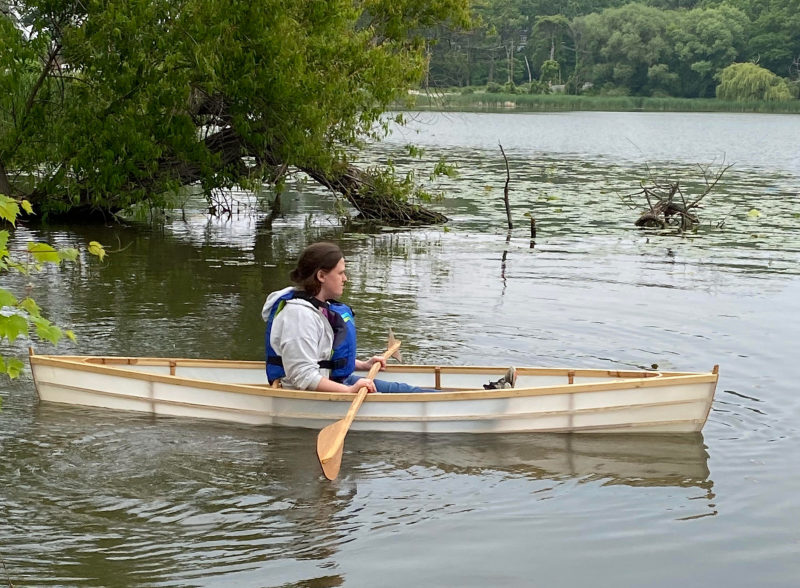 Karen Keenan
Karen KeenanLike so many of John’s building projects, the Wee Lassie was passed along, this time to his daughter.
In a corner of the maritime center, he noticed a set of molds that had been used to build a strip-planked Swift Prospector 16, and realized they could be adapted to form the molds for a skin-on-frame version that would be an ideal replacement for the old Skowhegan. He laminated red oak over the existing molds to create the frames and for the stringers used some cypress salvaged from another large project underway at the center.
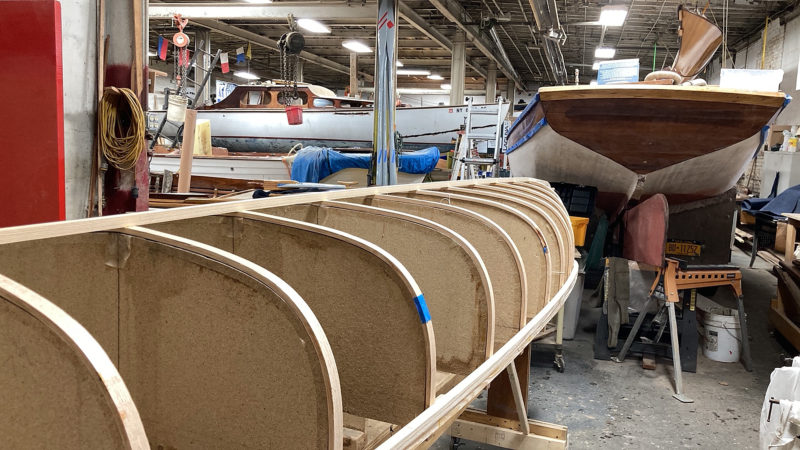
The Prospector was built upside down, its frames laminated on molds originally used in the construction of a strip-plank version.
“The construction of the Prospector was the same as the Wee Lassie other than in the interior details. The Wee Lassie got a backrest, the Prospector has a carry yoke. The Wee Lassie has the single center plank, the Prospector got a cypress planked floor and traditional fitted seats. It was my first time caning seats. Fortunately, there are experts at the maritime center to provide guidance, and it was fun.”
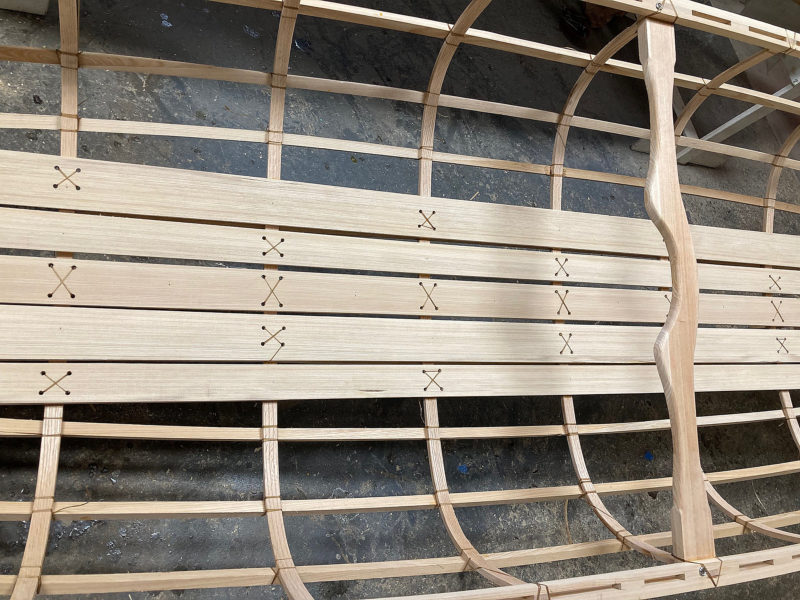
The bottom of the Prospector was strengthened and protected by full-length cypress planking glued and lashed to the frames beneath.
Within three months the Prospector was ready for launching. It was just the right size to carry John, his wife, and their camping gear and Labrador retriever. “It was initially too ‘lively,’ even though I paddle kneeling on the floor. So, I lowered the front seat an inch and that helped the stability a lot. And for regular use, when we have all the gear and the dog, it will calm down even more.”
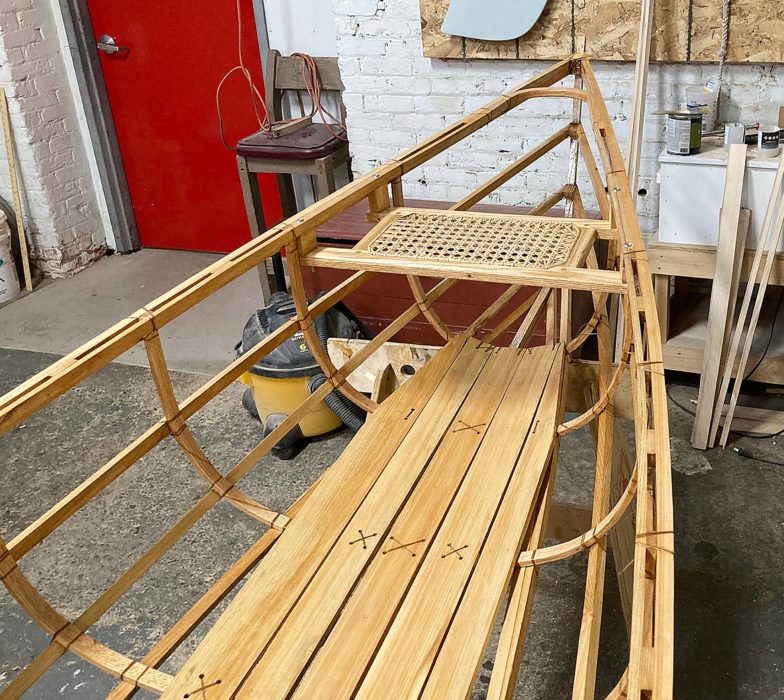
Traditional cane seats were fitted in the stern and towards the bow. Seated well aft, the paddler’s weight keeps the bow from digging in, and the narrow beam in the stern results in an easy reach for paddling.
This summer John plans to introduce the Prospector to the streams around Buffalo, New York, and then visit the Adirondacks for some extended trips. This fall, he says, he’s hoping to take it up to the Algonquin Park. “Maybe I’ll visit the Swift Canoe & Kayak shop in Ontario and let them take a look at it.”
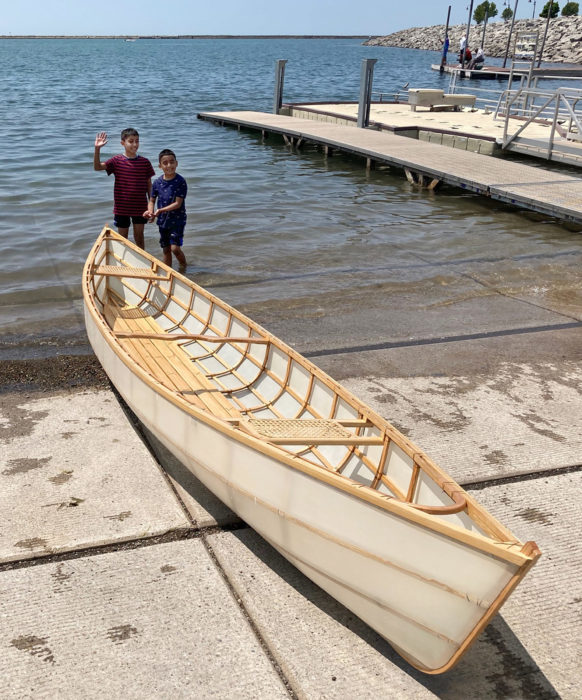
While disappointed by the Prospector’s finished weight of 60 lbs, John nevertheless was impressed by its volume and carrying capacity—ample for himself and his wife even when joined by their Labrador retriever and all their camping gear.
John is happy with the techniques he picked up through building the Wee Lassie and the Prospector but acknowledges that the overall weight of the Prospector was disappointing. “At 60 lbs it came in heavier than I wanted,” he says, “but that’s life.” It’s also a challenge he can’t resist: “I’m going to build a pack boat that I’ll bring in under 15 lbs.”![]()
Jenny Bennett is the managing editor of Small Boats.
Do you have a boat with an interesting story? Please email us. We’d like to hear about it and share it with other Small Boats readers.
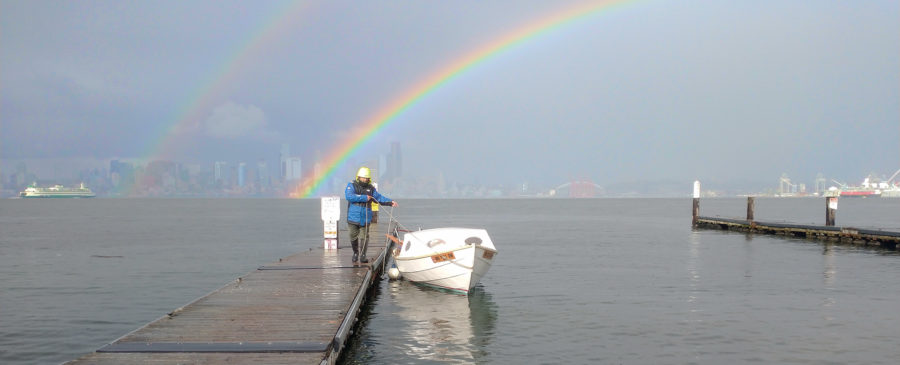

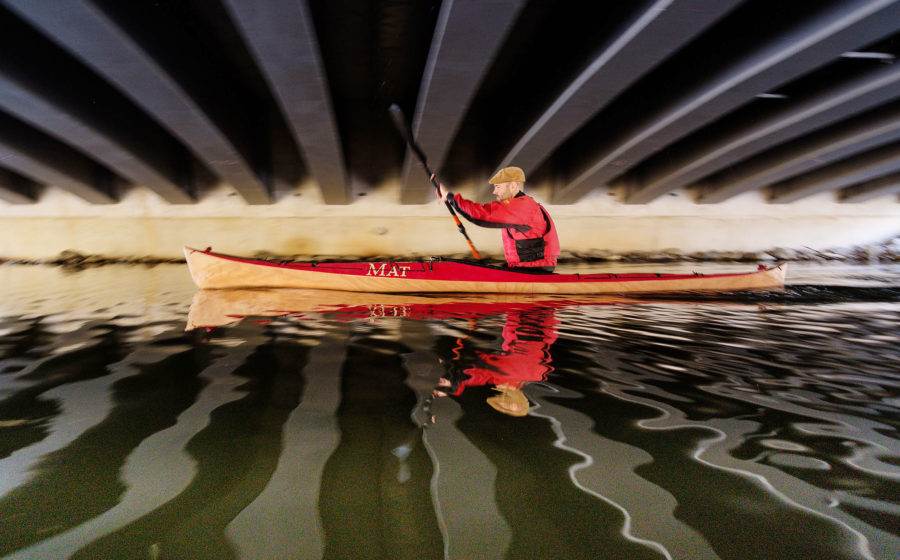
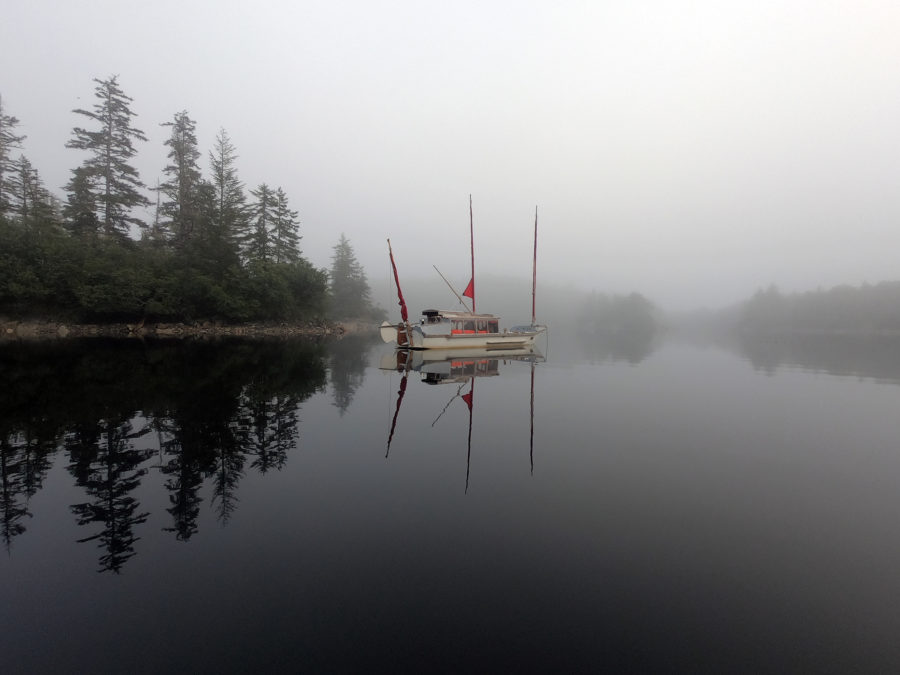
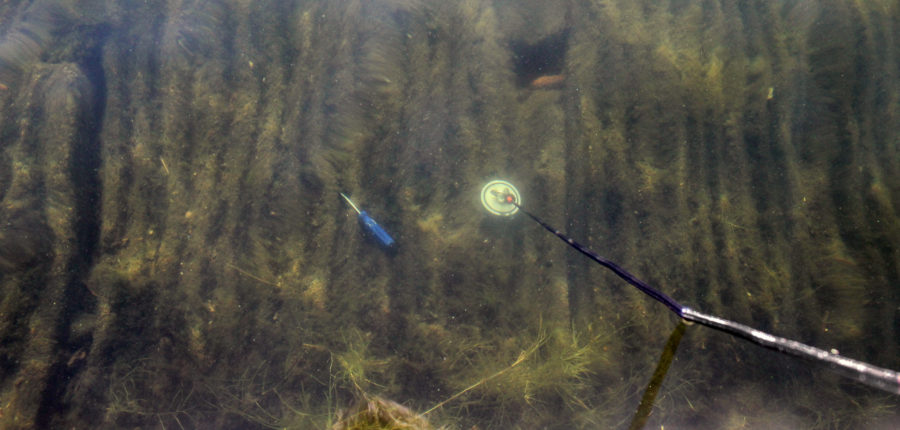
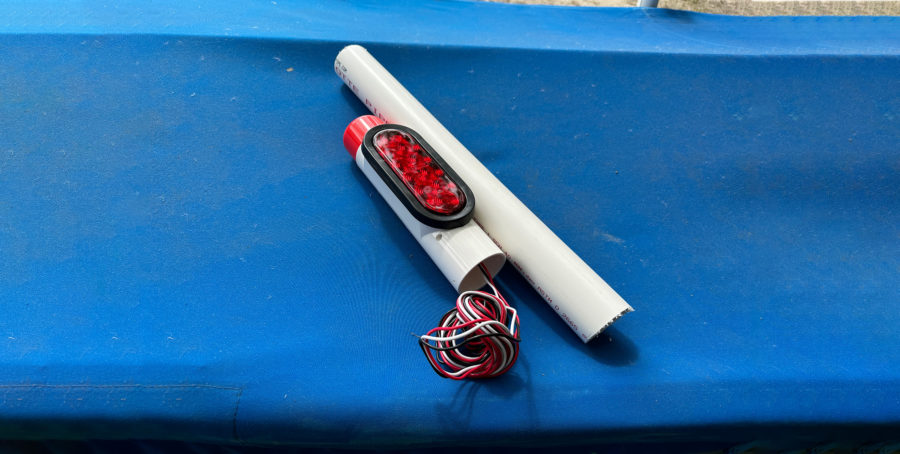
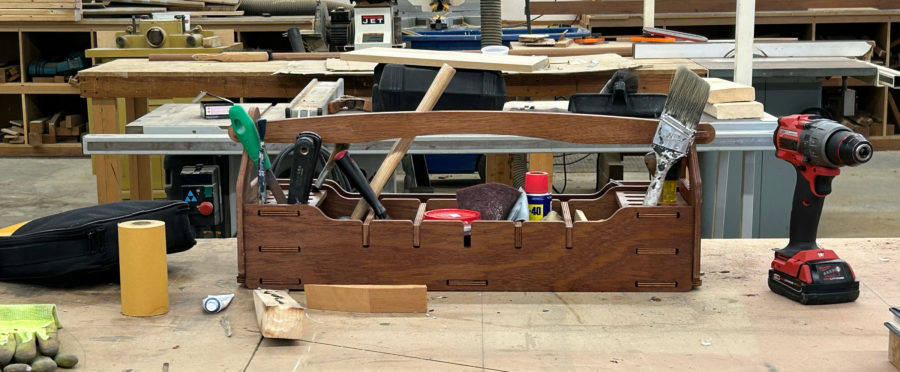
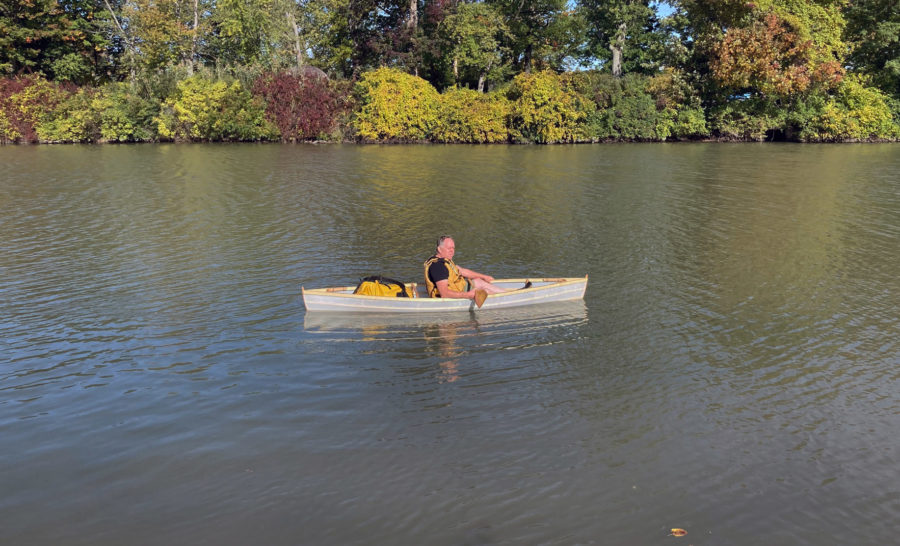
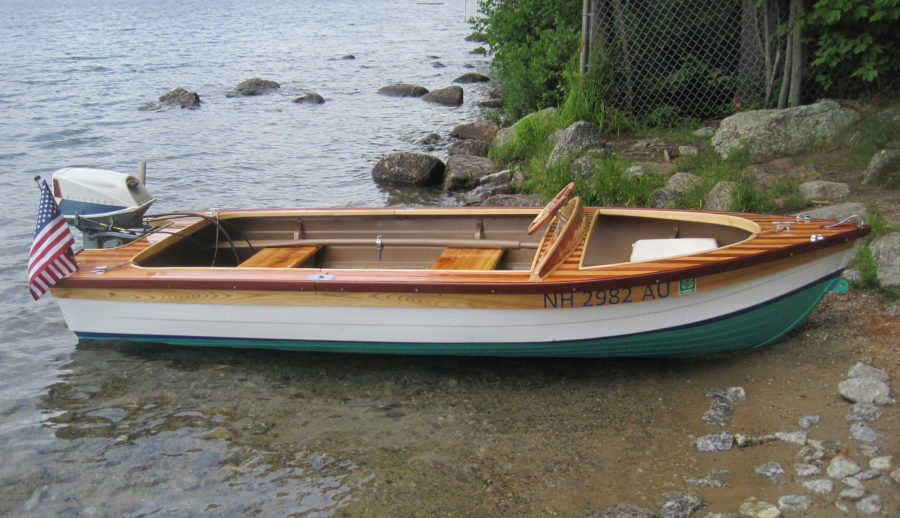
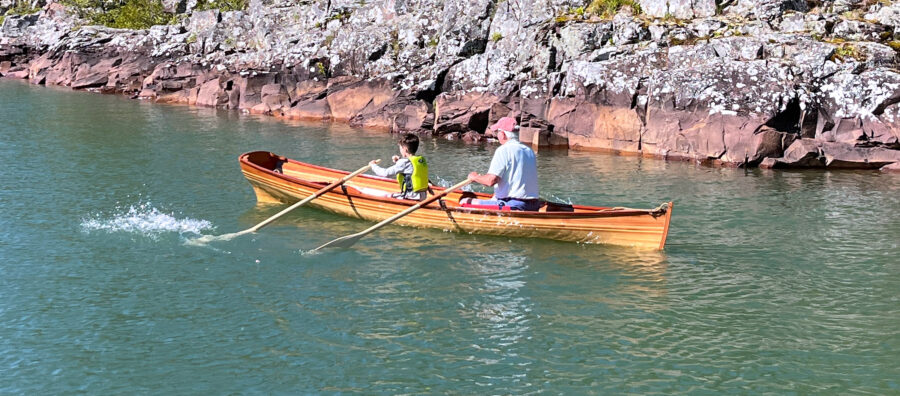
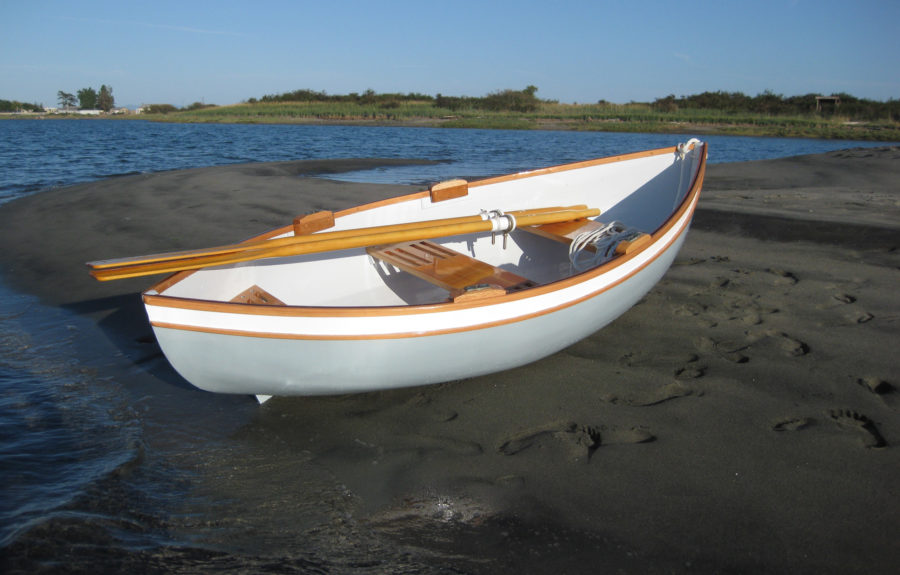
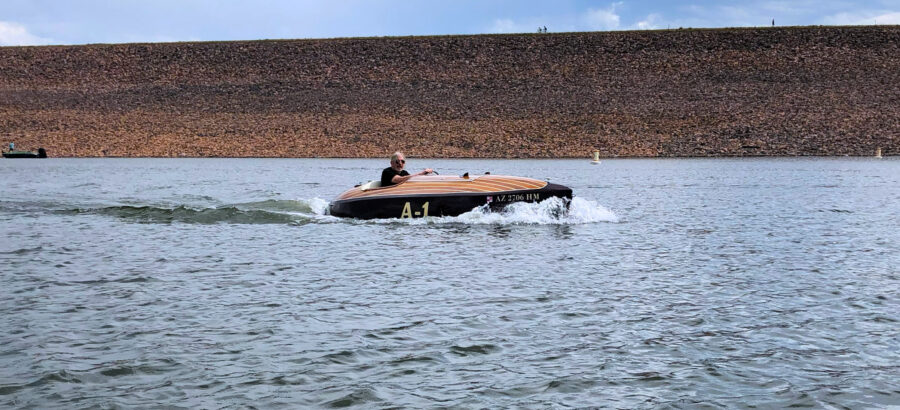
Great article. I enjoy seeing the different construction techniques presented in the magazine.
Really, really love skin-on-frame content!